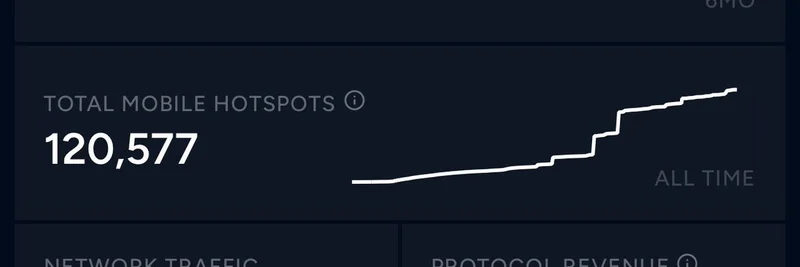BSC News recently dropped an exciting tweet highlighting the future of Kaspa ($KAS), a rising star in the Layer 1 blockchain space. They teased a deep dive into the project's development roadmap, pointing to big things ahead for this proof-of-work network. If you're into crypto, especially with an eye on meme tokens, this is worth paying attention to—especially as Kaspa gears up for features that could support vibrant DeFi and token communities. Let's break it down step by step, keeping things straightforward.
What Is Kaspa, Anyway?
Kaspa stands out in the crowded blockchain world by using a unique structure called a blockDAG (Directed Acyclic Graph for blocks). Unlike traditional blockchains that process one block at a time, Kaspa handles multiple blocks in parallel. This means faster transactions and higher throughput without sacrificing security or decentralization.
Powered by the GHOSTDAG consensus protocol, Kaspa is a proof-of-work chain that's energy-efficient compared to giants like Bitcoin. It launched fairly in 2021 with no pre-mining, and right now, it cranks out up to 10 blocks per second. That's speedy—confirmation times are mostly limited by your internet connection. Looking ahead, the team aims for 32, then 100 blocks per second. For meme token enthusiasts, this high speed could mean quick, cheap trades once smart contracts roll in.
The Crescendo Hard Fork: A Game-Changer
Back in May 2025, Kaspa nailed its Crescendo hard fork, bumping the block rate from one to 10 per second. This upgrade wasn't just about speed; it laid the groundwork for more advanced features. Developers and the community celebrated it as a smooth success, setting the stage for enhanced security and DeFi capabilities.
Since then, things haven't slowed down. The community rebranded its main account to @kaspaunchained for more decentralized vibes, and there's even a real-world event called the Kaspa Experience happening in Berlin on September 13, 2025. Think product expos, grants, and using $KAS for actual purchases—cool stuff that bridges crypto with everyday use.
Recent Innovations Keeping the Momentum
Post-Crescendo, Kaspa's ecosystem has seen some neat additions. One standout is Kasia, a fully encrypted P2P messaging app built right on the Kaspa network. It uses Layer 1 transactions for secure chats, and with just 10 $KAS in your wallet, you can send over half a million messages. That's leveraging the chain's speed in a practical way.
There's also talk of verifiable programs (vProgs), which are like self-governing smart contract modules. These could enable atomic transactions across programs, paving the way for complex DeFi apps. Plus, an MCP server for AI agents to interact with Kaspa is in the works—imagine bots handling trades or memes seamlessly.
The Big Picture: Kaspa's 2025-2026 Roadmap
In July 2025, Kaspa laid out its R&D focus for the coming years, emphasizing scalability, security, and support for decentralized apps. These updates are being integrated into the Rusty Kaspa repository, Kaspa's Rust-based implementation for better performance.
DAGKnight: Upgrading Consensus
DAGKnight is the next evolution of GHOSTDAG. It speeds up how transactions get ordered and confirmed, ditching assumptions about network delays to make the system more robust against attacks. Based on research from 2022, it's set for the upcoming hard fork. In simple terms, this means even safer and faster operations, crucial for high-volume meme token launches or trading frenzies.
ZK Layer and L1-to-L2 Bridges
Zero-knowledge (ZK) tech is coming to Kaspa with a dedicated layer that handles rollups—batches of transactions processed off-chain but settled on Layer 1. This includes bridges for seamless moves between layers, enabling atomic swaps across rollups. Expect this in late 2025 or early 2026. For meme creators, this could mean scalable platforms for token drops, NFTs, or viral campaigns without clogging the main chain.
Reverse MEV Auctions: Fairer Value Extraction
Miner Extractable Value (MEV) is a hot topic in crypto—it's when miners profit from reordering transactions. Kaspa's reverse MEV flips the script by letting miners offer kickbacks to users for inclusion rights. This reduces exploitation and puts more value back in users' hands, especially in a parallel-block setup. It's proposed for the next hard fork and could make Kaspa a fairer playground for meme token communities.
Oracle Voting: Real-Time Data You Can Trust
Oracles bring real-world data into blockchains, like prices or events. Kaspa's version lets miners vote on this data directly in consensus, using the high block rate for sybil-resistant security. This fixes common DeFi vulnerabilities and could supercharge meme tokens tied to real events, like prediction markets or gamified trends.
Why This Matters for Crypto and Meme Tokens
These developments aren't just tech jargon—they solve real pain points. DAGKnight beefs up security in fast environments, ZK layers scale for mass adoption, reverse MEV promotes fairness, and oracles ensure reliable data. For a site like Meme Insider, where we track meme tokens, Kaspa's push toward smart contracts and Layer 2 solutions opens doors. Imagine meme coins thriving on a chain that's ultra-fast and secure, rivaling Solana or Ethereum but with PoW roots.
Kaspa's community-driven approach, like the Berlin event, shows it's building for the long haul. If you're holding $KAS or eyeing meme projects, keep an eye on these milestones—they could spark the next wave of innovation.
For the full scoop, check out the original article on BSC News or the tweet from @BSCNews. What's your take on Kaspa's future? Drop your thoughts in the comments!


